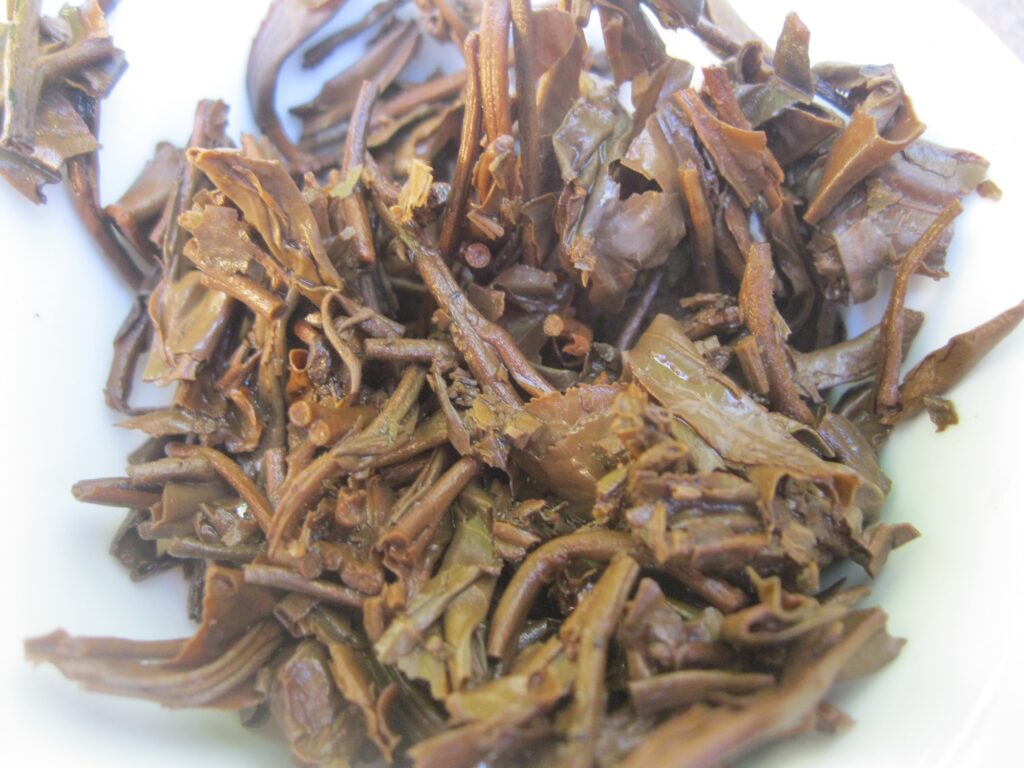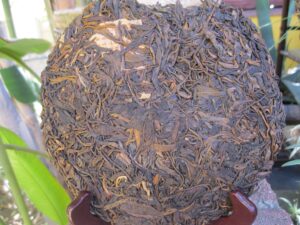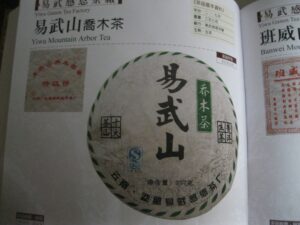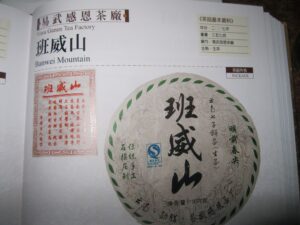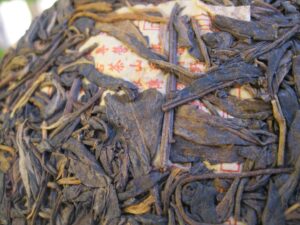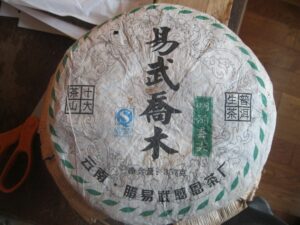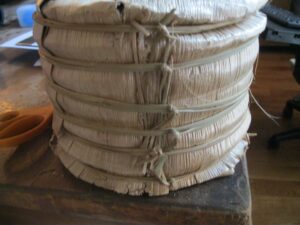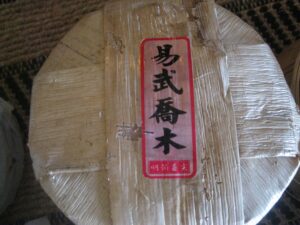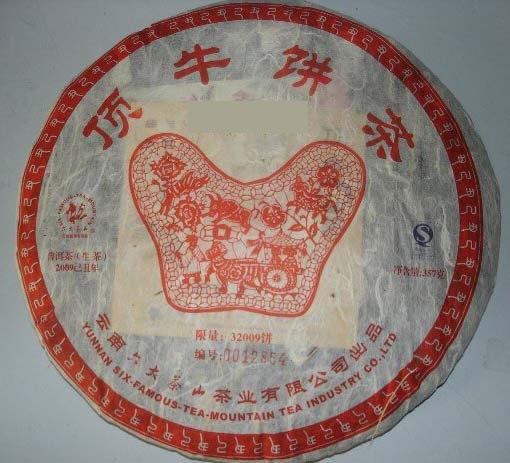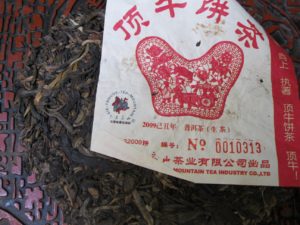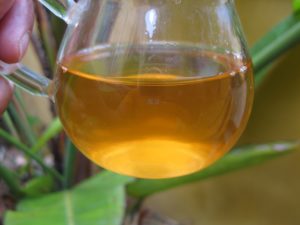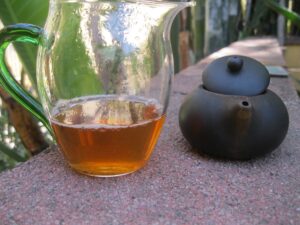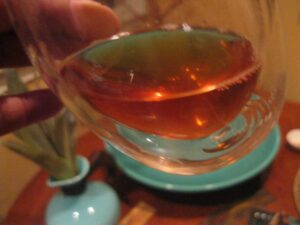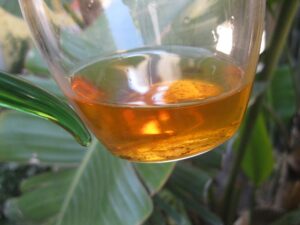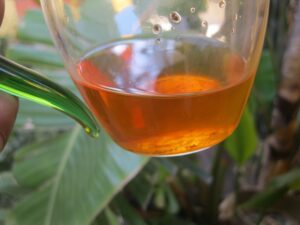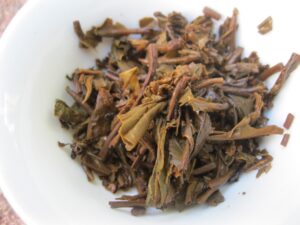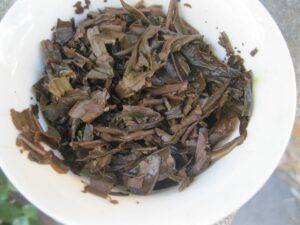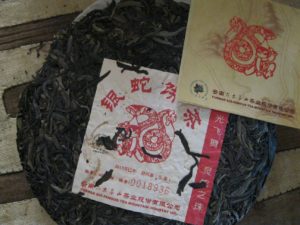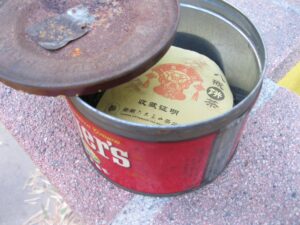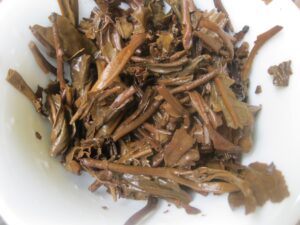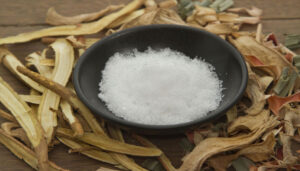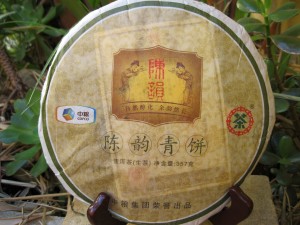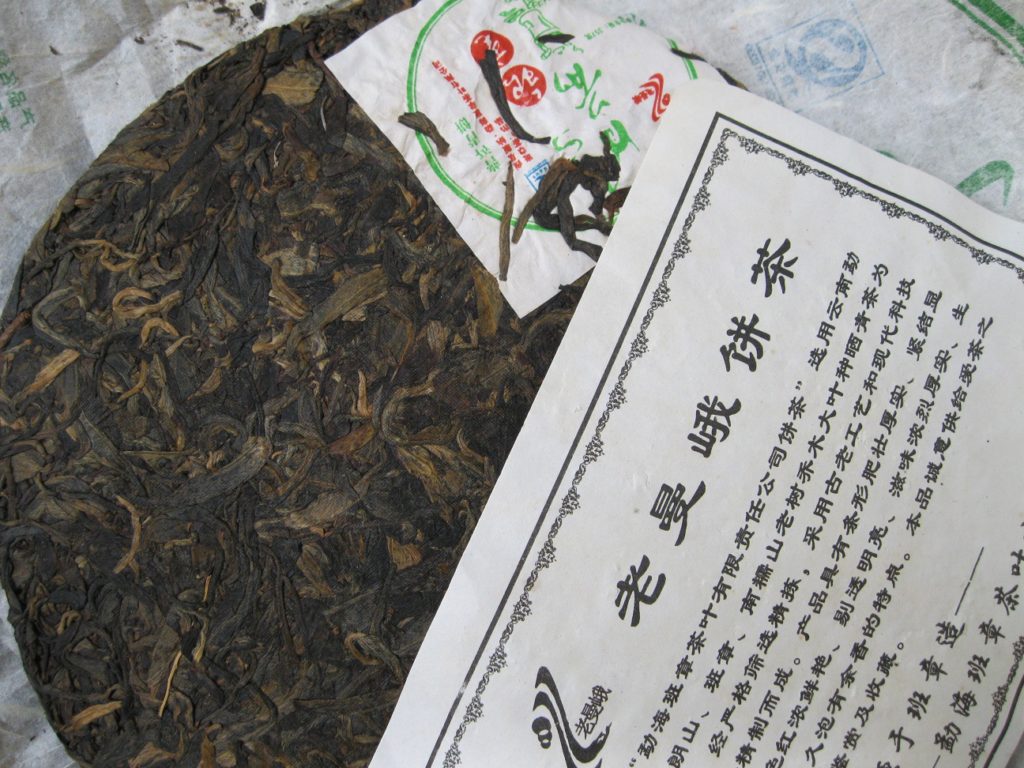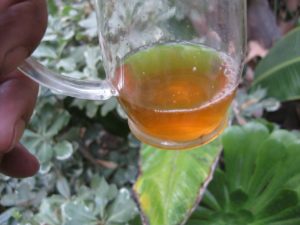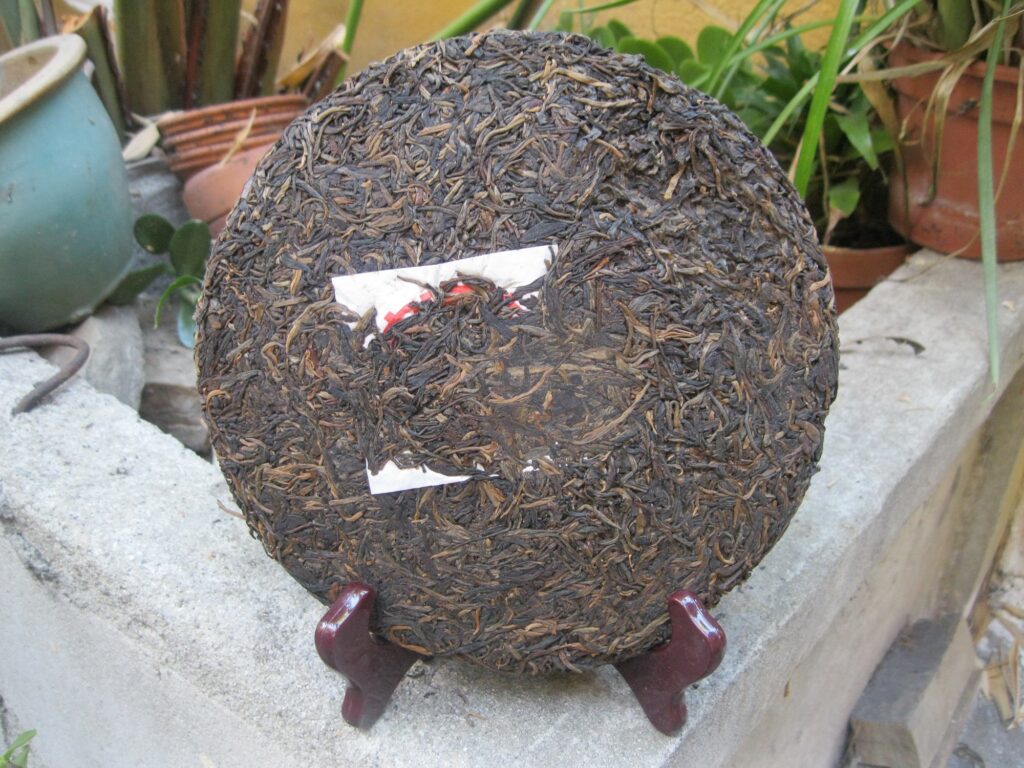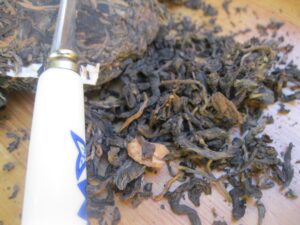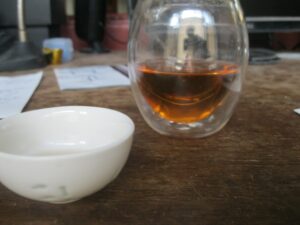Puerh Junky Visits Yiwu Gratitude
Puerh Junky Visits Yiwu Gratitude should be a a tidy communique about just how tasty this offering is. It is very, very good. It tastes very, very good. The storage on it is spectacular, really the epitome of ideal storage. It comes from a preferred vendor, whence many of the offerings constituting the Puerh Royals sampler hail, who has a keen sense for storage.
Storage of this sort might be characterized as juicy. There’s plenty of humidity and heat but neither excessive, so the underlying character of the puerh is in no way tainted. It only brings out the best that each production has to offer. Storage of this type would understandably be classified as dry because dry storage has no humid notes. However, the range of dry storage is wide. Besides variations in humidity there are variations in temperature. Cool and dry storage obviously transforms quite slowly. Dry and hot storage transforms quickly but at the expense of aroma. Hot and dry storage also accentuates a perfumy-dryer-sheet-type expression that would otherwise transform into wicked camphor explosiveness.
Different cakes under the same conditions may also transform quite differently depending on product compression. There’s also air flow. Juicy storage checks all the boxes in terms of having everything necessary to be perfect. The second even a hint of humidity is detected, it’s no longer juicy but humid, no matter how light that humidity might be. Humidity is clearly a matter of preference with similar gradations. The point here is to just distinguish juicy from humid.
Yiwu Gratitude has juicy storage. It allows for maximum appreciation of what Gratitude TF is throwing down, and what they’re throwing down is every bit as good as the cake looks.
The Yiwu Gratitude Factory opened their doors in 2004. They primarily craft raw cakes from wild material, using traditional of sun drying and stone pressing procedures. The Puerh Junky’s Yiwu Gratitude features a wrapper that’s a cross between two productions listed in the 2007 Pu-erh Yearbook.
This is the exact same production being offered from the following year. Instead of the title including qiaomu as with the PJ offering, it’s included in the the green strip to the right. The block lettering at the bottom is identical to the YWG. The flanking blocks, the right stating raw puerh and the left ten great tea mountains are identical with both cakes.
This ’07 Banwei includes mingqian springtips in green lettering to the far right, whereas this data is included in the green strip with the PJ listing. The Banwei and the YWG have the same neifei, whereas the Yiwu from ’07 is more generic.
Here’s the PJ’s Yiwu Gratitude for comparison’s sake.
The use of traditional to describe their way of doing things, goes beyond just the pressing. They wrap their tong traditionally as well.
The super traditional tong are branded with the name at the top. They don’t go that far, as you can see:
At the bottom of this sticker, the phrase mingqian springtips is included. As mentioned in the original listing, wispy Yiwu effect notwithstanding this is legitimately “springy.” It’s one of the most floral Yiwu productions I’ve tasted. There’s more “spring” to it than the Dragon, which is comparable in terms of the type of floral expression. It could be described as having an apricot cum grapefruit nature. It isn’t lilac, honeysuckle, jasmine or any of those other really loud perfumy florals, which at fifteen years of age aren’t that bad anyway.
But wait! There’s more. That more is the hallowed root beer, which to be honest is much more cream soda here, as there’s no spice to emerge just yet. This type of offering usually doesn’t go the spice route. That’s fine. The creaminess and richness is good enough.
Yiwu Gratitude is sweet and durable. All of the attributes that are evident from the outset last throughout the life of the tea session. That includes the sweetness.

